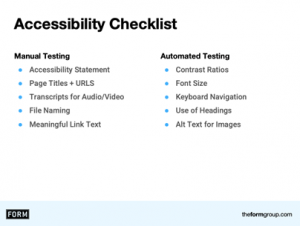DEI-Informed Fundraising: How Digital Marketing Can Further Your DEI Goals
This post is part four of a five-part series on DEI-informed fundraising.
In part one of this series, we explored the connection between list strategies and DEI—and concluded that lists alone cannot make an organization more diverse. In part two, we offered six principles for DEI-informed messaging. In part three, we applied a DEI lens to direct marketing data processes.
In this post, we map out several important DEI considerations for digital fundraisers. Content on DEI and digital often points out that DEI is an important strategy for digital marketers to understand and employ. We agree, but at Avalon, we also want to go deeper:
Our goal is to maximize these opportunities in an authentic way—and simply to do the right thing. We intend to move beyond “woke-washing” to actually further DEI principles with our digital marketing work.
First and foremost, we recognize that digital is a broad term. It covers all the digital platforms that people use, from social to websites to payment platforms and beyond. Because of this, we have to think bigger than simple campaign-level change. Instead, the spotlight should be on each organization’s holistic commitment to diversity, equity, and inclusion across all of its work—or, what the Chronicle of Philanthropy calls a “culture of inclusive fundraising.”
Second, marketers should be aware that digital platforms introduce both opportunities and obstacles for DEI-informed activities. On the one hand, low-cost personalization and real-time information provide opportunities to tailor tactics to each donor and speak directly to their experiences. Technology also enables marketers to respond quickly to problems, stay relevant to current events, and monitor donor engagement alongside the usual giving metrics.
On the other hand, digital formats present their own challenges to equity and inclusion. According to the National Digital Inclusion Alliance, “Digital Equity is a condition in which all individuals and communities have the information technology capacity needed for full participation in our society, democracy, and economy.” Unfortunately, we aren’t there yet. Many people cannot afford devices, lack connectivity, or lack digital literacy—all of which limit how inclusive your campaign can really be.
Third, digital marketers should center digital accessibility considerations for all campaigns. At NTEN’s Nonprofit Technology Conference, Rachel Kribbs and Katelyn Gerber from The Form Group outlined goals and offered strategies and tools covering six categories of accessibility: auditory, cognitive, neurological, physical, speech, and visual. Specifically, they suggested the NTEN Equity Guide, the WebAIM Accessibility Guide, and the W3C Web Content Accessibility Guidelines as good resources for marketers. They also shared the following accessibility checklist:

In addition, digital fundraisers should ensure that web forms and payment platforms are inclusive of and accessible by your target audience(s). In part three of this series, we spoke to the importance of inclusive data intake and shared our checklist for ensuring sound practices. In addition, payment preferences and access to payment types may differ across your audience(s), so be sure that you connect everyone to the best technologies for their engagement and giving.
Fourth, digital marketers should hold themselves to high standards for messaging. In part two of this series, we outlined six principles for DEI-informed messaging, including sharing diverse stories and images, using trauma-informed practices, and bringing both donors and your leadership along as you implement necessary changes. Because digital tools allow your message to reach more people at scale, DEI-informed creativity is all the more critical.
Finally, keep at it. Digital marketing is constantly evolving, and new technologies will continue to emerge. It is vital that marketers research and grasp the DEI aspects of their particular tactics and digital tools. There is no one-size-fits-all or permanent approach. This is yet another reason why we are committed to a culture of inclusive fundraising: it enables DEI-informed fundraisers to keep pace with the industry, maximize opportunities, identify problems, and respond to challenges as they arise.
Next up in our series on DEI-informed fundraising: hiring. We will discuss this task force’s findings, practices we are implementing at Avalon, and challenges we have encountered as we work towards this change.